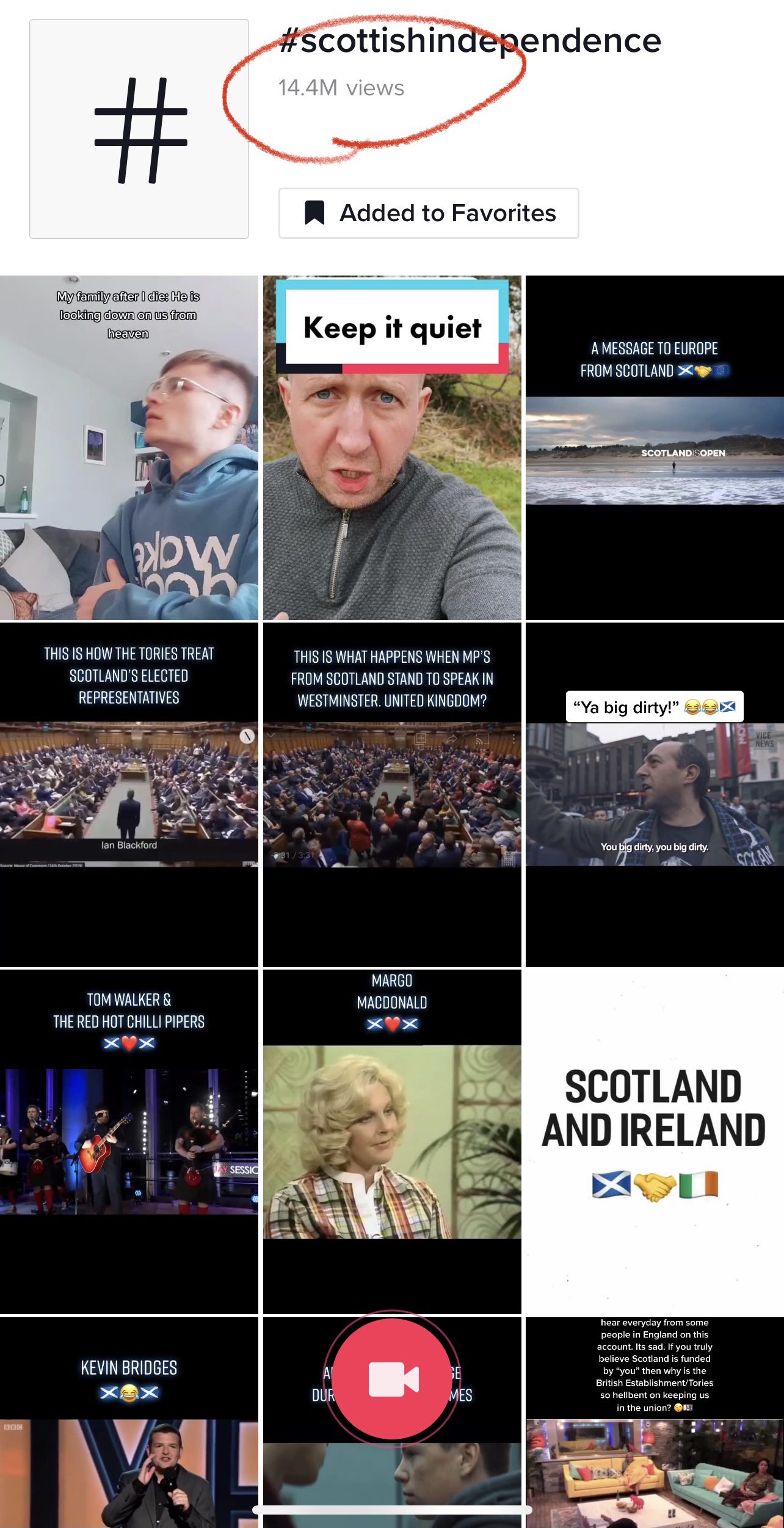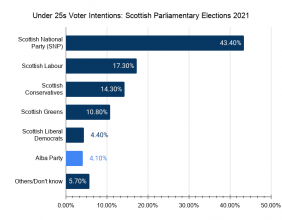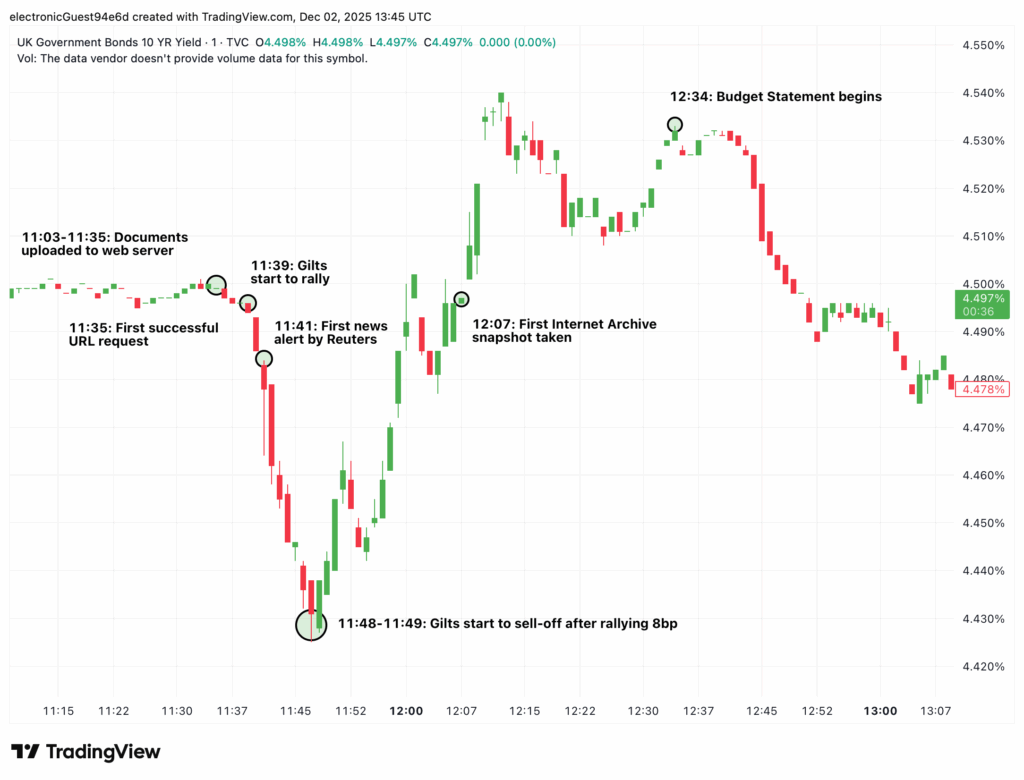With the Holyrood Elections on 4th May 2021 less than a month away, we will be increasing our (private) smartphone polling efforts as we draw closer to the date. The recent launch of the Alba Party by the former (SNP) First Minister, Alex Salmond, so close to the election date has altered the polling arithmetics and increased uncertainty. The addition of another pro-independence party gives Salmond some bargaining power to influence the SNP‘s constituency election outcome – depending in which elections the Alba Party decides to run in.
In our preliminary analysis, we identified 9 constituency seats with a high likelihood of being won by the SNP – 6 of which are currently held by Conservative Members of the Scottish Parliament (MSP) since the 2016 elections. In our poll last month we identified Scottish Labour fast snatching votes from the Conservatives and Liberal Democrats (LD) following the announcement of Anas Sarwar as Party Leader. This is now being reflected in some recent public polls, and we believe this trend to have continued in the past few days.
Despite the positive news on the UK vaccine roll out program, we assess the Tory (Conservative) government of Boris Johnson to be at a high risk of losing more votes than currently projected in press reports. We will be updating our latest polls and seat projections in the next couple of days.
Please contact us if you are interested in learning more about our private polling services and offerings.
Holywood electoral system crash course
There are a total of 129 seats in the Scottish Parliament:
- 73 are constituency seats which are won in a first-past-the-post (FPP) voting system similar to the UK general elections.
- The electorate has two votes: i) one for a constituency candidate, and ii) a second for a political party.
- 56 regional seats are split evenly across 8 regions. Each region has 7 seats allocated in proportion to the votes received by each party – similar to the German electoral system.
This hybrid electoral system ensures the major parties receive close to proportionate representation in the Scottish Parliament. For example, in the 2016 Holyrood elections the 129 seats were allocated as follows:
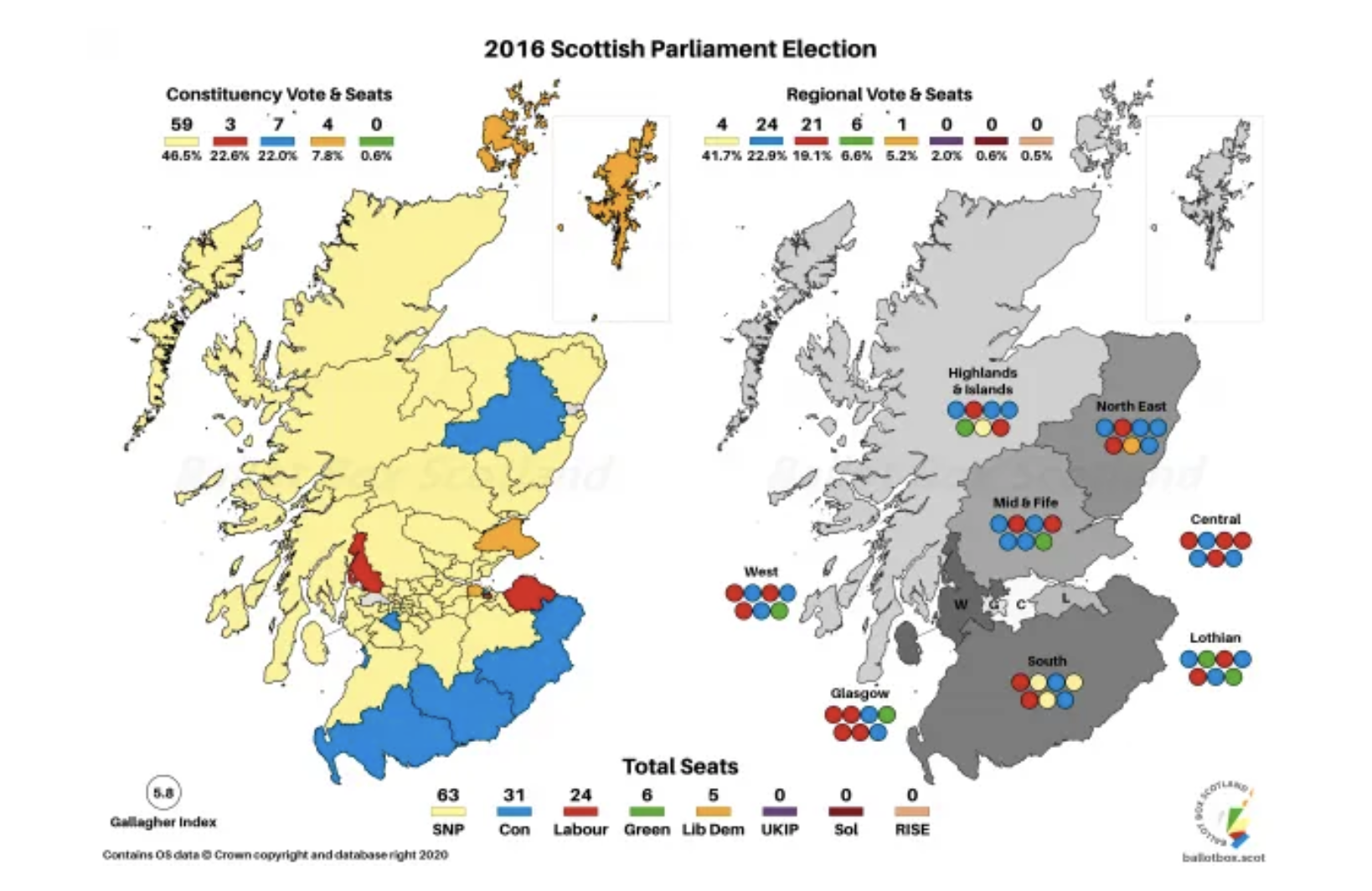
63 SNP (59 Constituency, 4 Regional)
31 Conservative (24 Regional, 7 Constituency)
24 Labour (21 Regional, 3 Constituency)
6 Green (all Regional)
5 Liberal Democrat (4 Constituency, 1 Regional)
In 2016, the majority (59) of the constituency seats were won by the SNP, whilst all but 4 of the 56 regional seats went to the other parties.
Constituency seats most at risk for pro-Union parties
The SNP is widely expected to do better than the 2016 elections in the constituency elections, provided Alba do not contend in marginal constituencies. We identified the following constituency seats to be at a significant risk of being won by the SNP:
| Constituency | Region | 2016 Outcome |
| Aberdeenshire West | North East Scotland | Conservative |
| Ayr | South Scotland | Conservative |
| Dumbarton | West Scotland | Labour |
| Dumfriesshire | South Scotland | Conservative |
| East Lothian | South Scotland | Labour |
| Eastwood | West Scotland | Conservative |
| Edinburgh Central | Lothian | Conservative |
| Edinburgh Southern | Lothian | Labour |
| Edinburgh Western | Lothian | Lib Dem |
| Galloway & West Dumfries | South Scotland | Conservative |
What do young Scottish voters make of Salmond's new Alba Party?
As mentioned in our previous updates, we believe the key to predicting the outcome of an eventual second Scottish Independence referendum is to better understand the under 30 year old voters. Little is known about the voting history of this group, and many will be voting for the first time. Moreover, younger voters are significantly under represented in public opinion surveys due to the difficulty in reaching them. This is the case both for traditional and tech enabled polling methods such as ours.
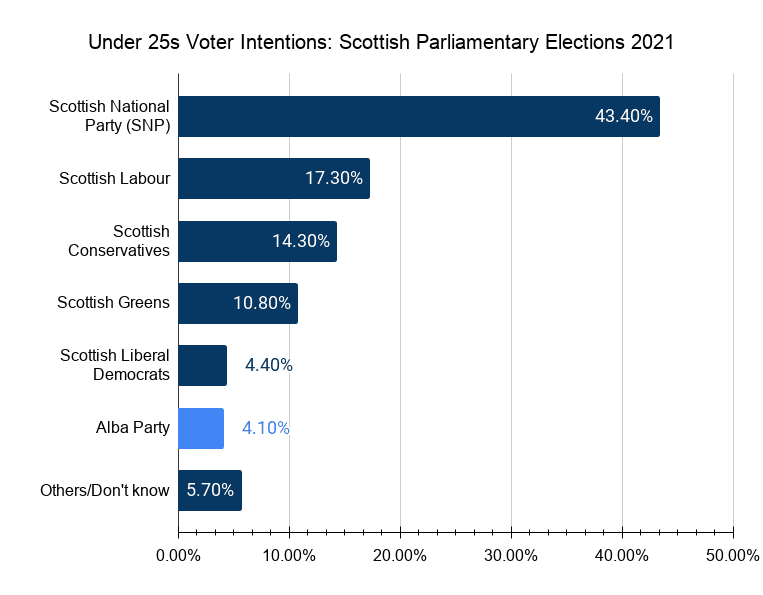
Our polls may be the most extensive elections survey conducted on this demographic group. Alex Salmond's new launched Alba Party has over 4% of the votes amongst the 801 Scottish under 25 year old voters surveyed. There is a large gender divide in the headline figure with 5.7% of males and only 2.5% of females.
For comparison, here are our previous polls for all voter groups:
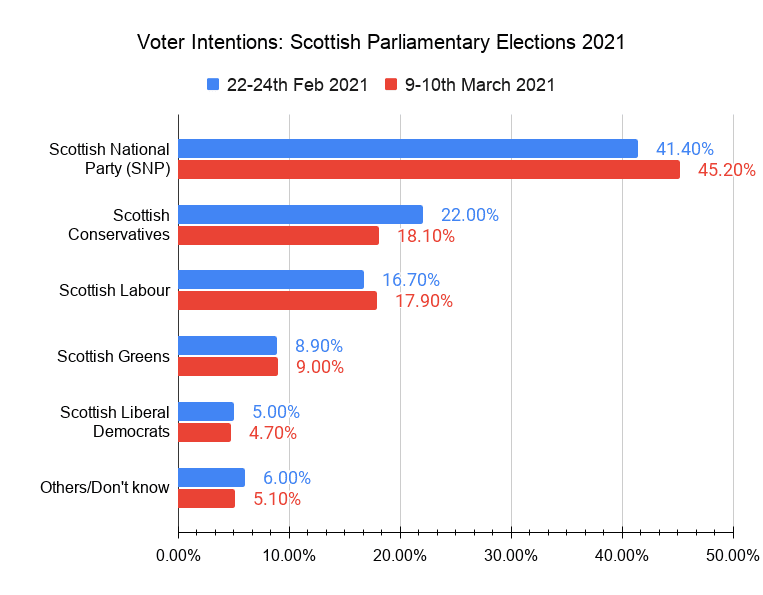
Under 25s on Scottish Independence
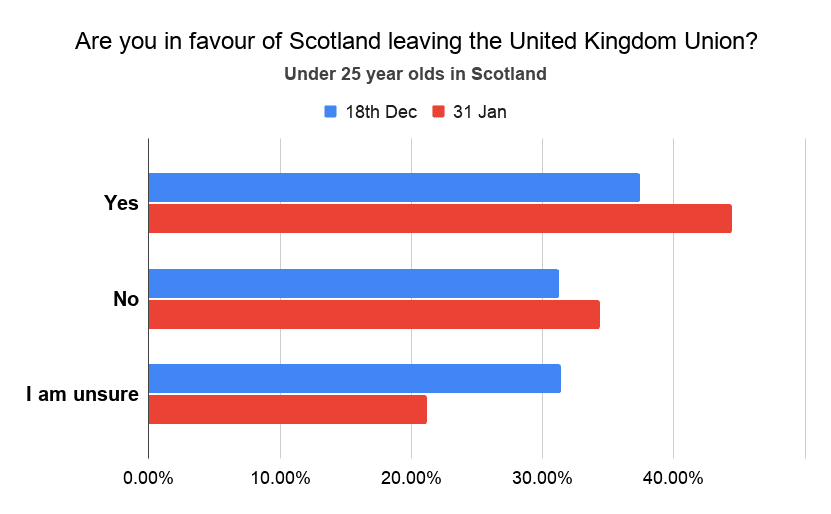
Update on #ScottishIndependence TikTok Campaign
Meanwhile, the #ScottishIndependence campaign on TikTok continues to increase in viewership at a steady approximate rate of 100K impression a day. We believe this is a sponsor ad campaign which has run been running for several months. TikTok is where younger voters can be reached without the scrutiny of the mainstream social media platforms such as Facebook.
